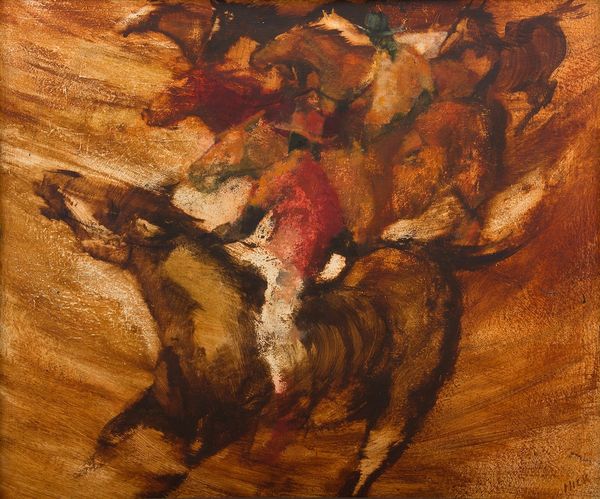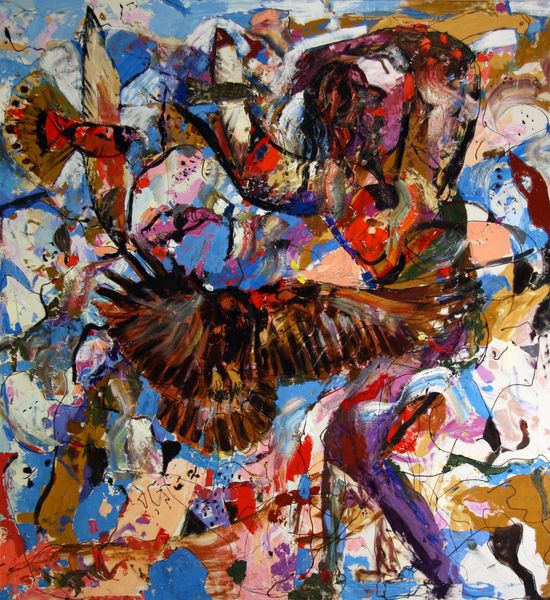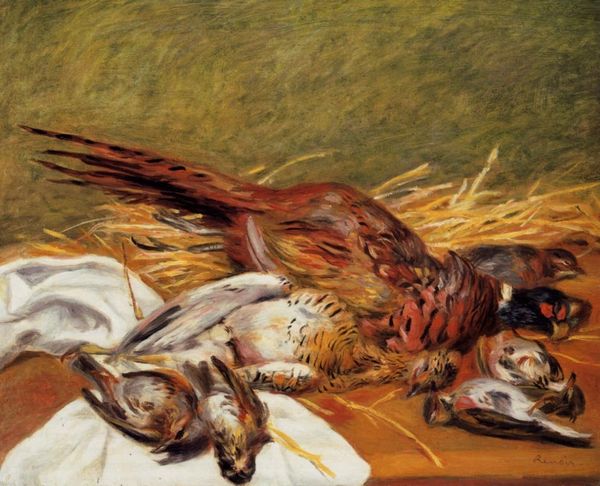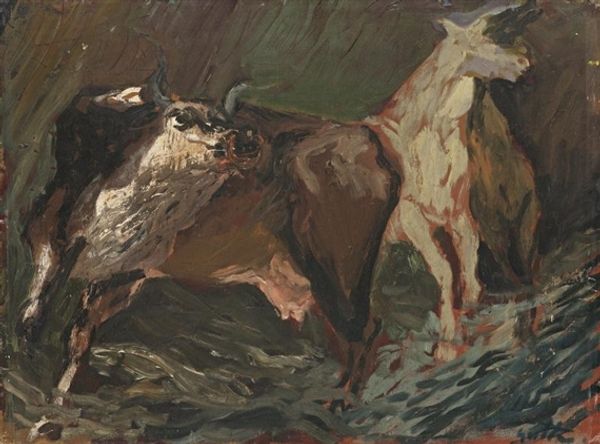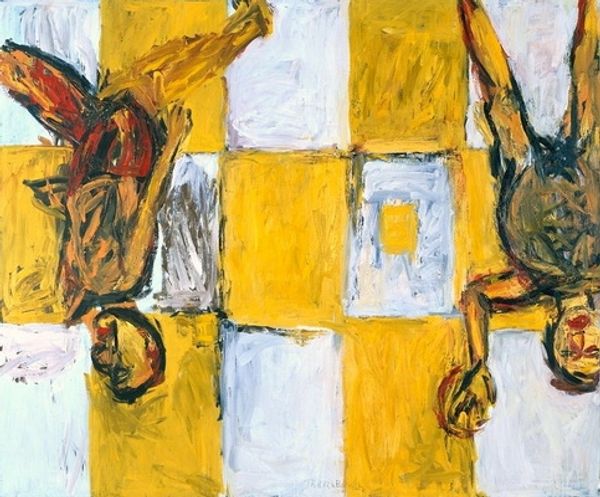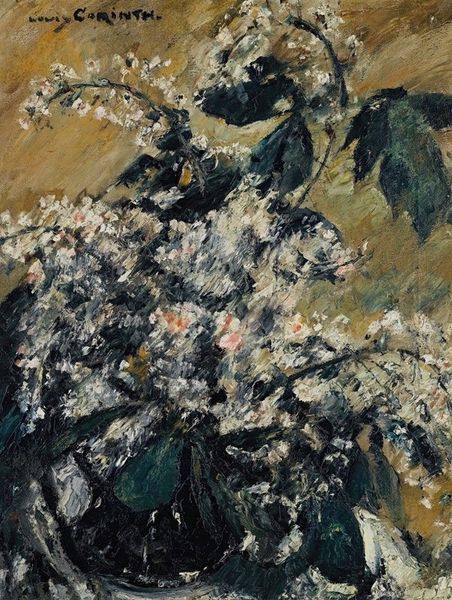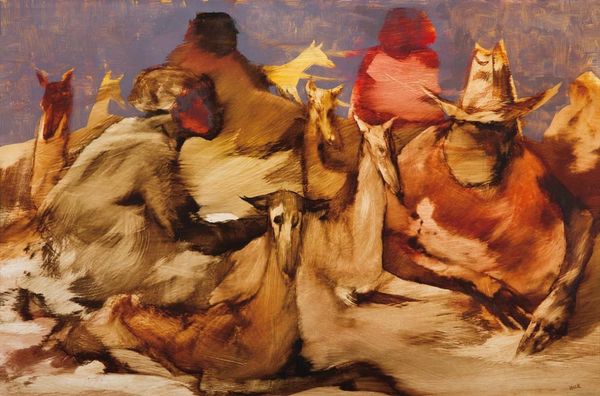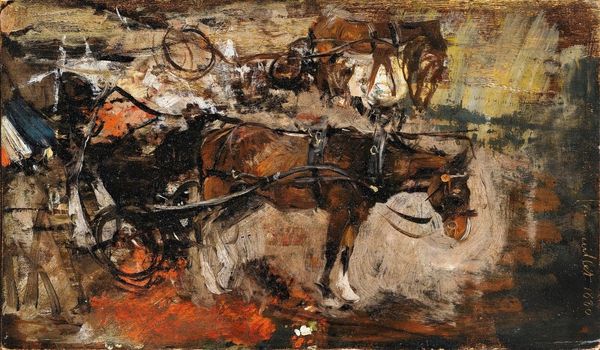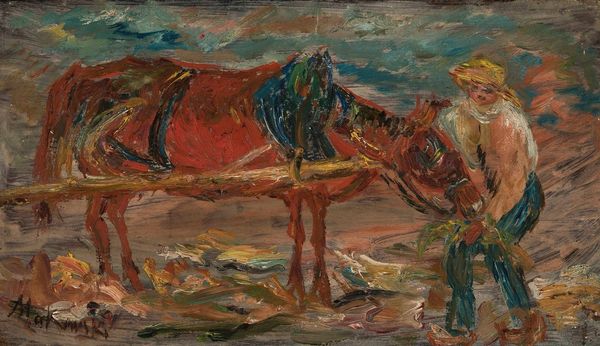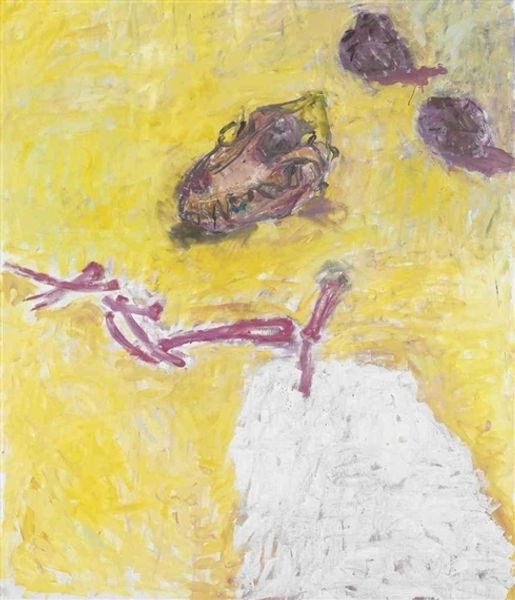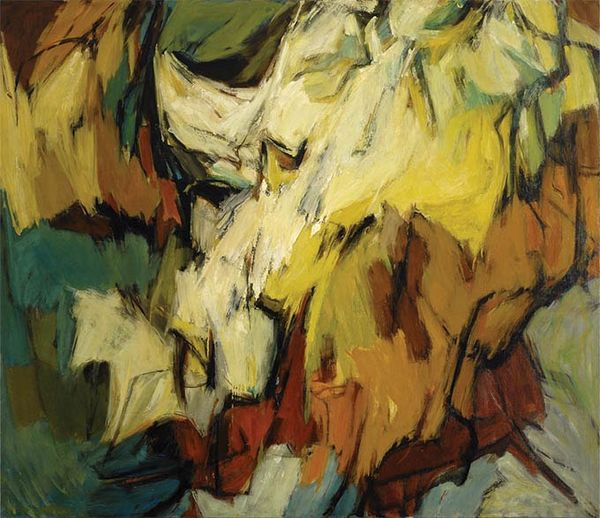
painting, oil-paint
#
animal
#
painting
#
oil-paint
#
figuration
#
oil painting
#
expressionism
Copyright: Public Domain: Artvee
Curator: Here we have Tadeusz Makowski’s "Ptaki," painted in 1921. Editor: My first impression is one of earthy chaos. The paint application seems thick and frenzied, the colors muted yet intense. It almost feels… anxious. Curator: I agree about the intensity. Look at the impasto! The texture is undeniably assertive. Notice the deliberate brushstrokes which contribute to an overall sense of dynamic tension within the frame. The semi-abstraction of the birds pulls away from straightforward naturalism. Editor: Makowski was, after all, working within a European art scene heavily impacted by World War I. While Poland regained independence in 1918, that newfound freedom came with considerable social and political upheaval. Might this frantic energy reflect that era? Curator: It's compelling to view it through that lens. However, even divorced from its socio-political moment, the interplay of form and color generates a unique semiotic dialogue. Observe the dominant browns and ochres contrasted with the almost feverish use of green and red around the bird’s head, creating focal points of raw visual energy. Editor: The subject matter, though seemingly innocuous, does invite questioning in the interwar years. Why these birds? Is he subtly commenting on the fragility or the resilience of life amidst all this postwar turbulence? Curator: I am most struck by its presentation of a kind of “vitality”. Makowski’s expressionistic leaning amplifies emotion through color and tactile engagement. This is more than an illustration, more of an active representation of raw energy. Editor: Well, for me, understanding Makowski's historical context – his artistic circle, the prevailing attitudes in newly independent Poland – adds a powerful layer to that rawness you mentioned. It transforms those brushstrokes from merely energetic gestures to expressive cries. Curator: It's a reminder how diverse methods can lead to nuanced conclusions, to bring depth to interpreting the object before us. Editor: Absolutely. It’s easy to be swept away with subjective experience. Historical study gives a more concrete framework to explore individual art practices and movements as they change the role of cultural experience and objecthood over time.
Comments
No comments
Be the first to comment and join the conversation on the ultimate creative platform.
